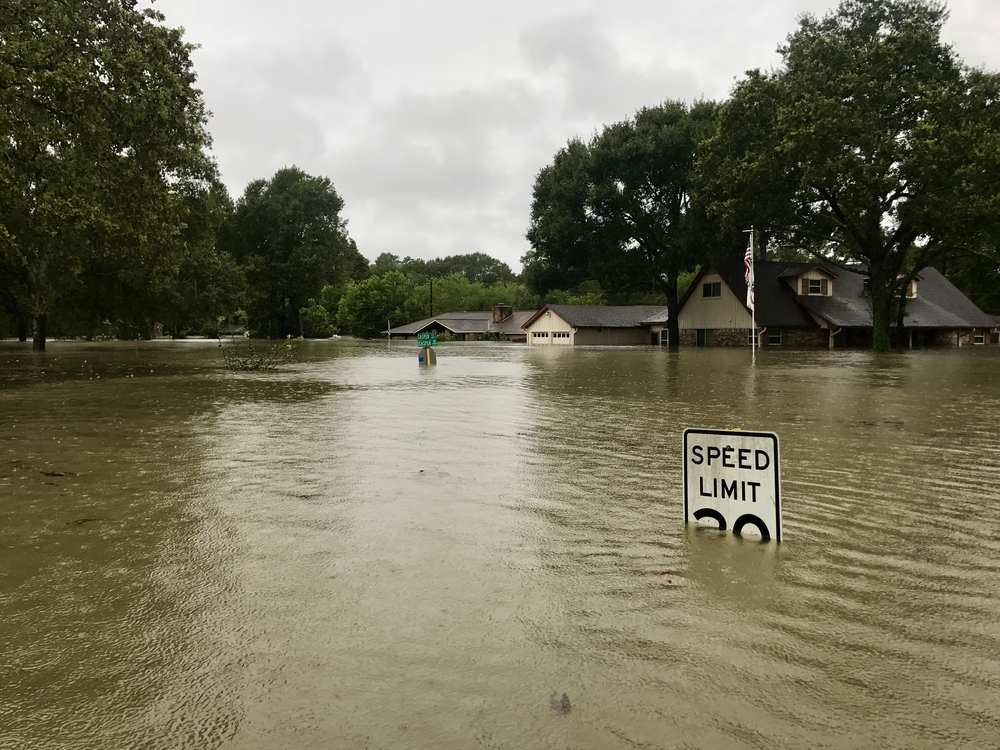After Harvey, A Perfect Storm For Bacteria
Hurricane Harvey left a slew of highly visible damage. But after the waters recede, the storm may leave something far less visible in its wake: a public health concern.

This article is part of our special coverage of Hurricane Harvey. Learn how storms like Harvey could be the “new normal,” and how developers are building with climate change in mind.
Soon after Hurricane Harvey made landfall in Texas, photos of city streets that had been transformed into urban rivers began appearing online and in the news media. But what happens when the water goes away, and what will it leave behind?
While rushing floodwaters can be immediately life-threatening, the full force of intense storms like Harvey can be felt long after the water ebbs. “Floods bring a range of physical impacts, but they also bring a range of chemical and biological impacts,” says Rachel Noble, a professor at the Institute of Marine Sciences at the University of North Carolina, Chapel Hill.
Some of the impacts — like overwhelmed infrastructure — are immediate. Others — like higher levels of bacteria — lurk beneath the surface for weeks. And unlike destroyed homes and toppled street lamps, these go largely unseen.
“During any kind of flooding scenario, the pathways that are intended for conveying human waste essentially away from the home are not going to function the way that they normally have been designed to function,” says Noble.
And the effects flow both ways. Flood water permeates and overwhelms delicate infrastructure like drinking wells and sewer pipes, causing them to become overburdened. At the same time, the floodwater spreads everything it comes into contact with.
[Are we facing electrical gridlock?]
And it takes some time for clean-up to happen. “The water might have receded for some residents, and the pump might be working again, and the electricity might be on,” says Noble, “but the water in the well itself can be damaged and can be contaminated.”
The effects from compromised infrastructure often result in relatively minor conditions like gastrointestinal upset, diarrhea, nausea, and vomiting, Noble notes. But one organism that is particularly prevalent during flooding conditions merits stronger concern, a bacteria called Vibrio.
Vibrio is a genus of bacteria and certain species are capable of causing disease in humans. While people are typically infected by eating raw or undercooked shellfish, the bacteria can enter through open wounds as well. According to the Center for Disease Control and Prevention, most people with a mild case of vibriosis recover after a few days, but certain infections can lead to limb amputation. During Hurricane Katrina, 22 infections and five deaths were attributed to Vibrio.
While the bacteria are naturally found in water, flood conditions create an ideal environment for them to thrive, and they crop up in much higher concentrations. The bacteria favor warm, stagnant waters, and floods often bring organic matter like soil for them to cling to. Certain species of Vibrio flourish in the middle-salinity water that’s typical of flooded coastal areas.
The amount of time that these effects linger depends on the condition of the groundwater, says Noble. If it’s contaminated or remains at abnormally high levels, sewage and drainage pipes can remain submerged. That means they’ll continue operating at diminished capacity, and certain areas may become more prone to repeated inundations and damage.
“It can take weeks for that groundwater level to go back to anything that even approaches normal,” Noble says.
Johanna Mayer is a podcast producer and hosted Science Diction from Science Friday. When she’s not working, she’s probably baking a fruit pie. Cherry’s her specialty, but she whips up a mean rhubarb streusel as well.